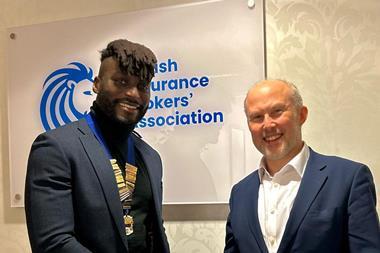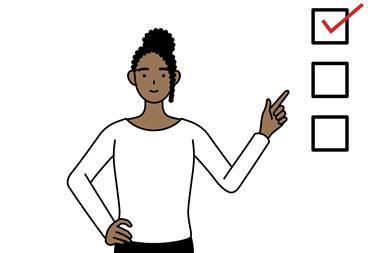The insurance sector must work harder to retain its ’kaleidoscope of talent’ and eliminate ’empty diversity and inclusion pledges’
By Technology Editor Clare Ruel
This week, I have been thinking about the following question - ’where are you from?’ It’s a question I have heard over and over again in my personal life, but one that I rarely get asked in my professional life.

However, the other day, someone actually asked me this question and it got me thinking why individuals ask it in the first place.
I’ve concluded that people ask because they see similarities within themselves, or they can’t place me into any singular ethnic category – I could pass for many different ethnicities.
Being Anglo-Indian, which describes someone of mixed Indian and British or European parentage, I have always bridged a mixture of cultures.
On my father’s side I have Indian, Portuguese, British and Spanish heritage, while on my mother’s side, I have an Indian, Burmese and British heritage.
I am what is referred to as a fabricated race – one that is made up.
The Anglo-Indians stemmed from the British Empire. Some history books state that the British paid various British or European soldiers to create a race that could not side with the British or the Indians – this ethnic demographic were quite literally ’stuck in the middle’.
However, when India gained independence in 1947, many Anglo-Indians left for Canada, the UK and Australia, among other places. Many people now classify themselves as Anglo-Indian, including national treasure Joanna Lumley, comedian Alistair McGowan and singer Cliff Richard.
But why is this history lesson important?
Lacking representation
Earlier this month (July 2022), I wrote an article about the lack of senior leaders in the insurance industry who identified as belonging to an ethnic minority group - the piece originally included a semi-autobiographical element, as I have found that a similar issue exists in journalism.
It was my editor, Katie Scott, who had the good sense to remove those sentences from the initial article, suggesting that I instead explored the topic in more detail within a briefing feature. She was right - this issue does warrant the full attention of an article like this one.
The issue is that the journalism sector, like insurance, lacks ethnic minority representation and, therefore, also struggles with retaining talent.
This is a circular problem - a lack of representation within an industry does not attract diverse ethnic talent and, in turn, this contributes to low levels of staff retention.

A report published by the National Council for the Training of Journalists (NCTJ) in May 2021, entitled Diversity in journalism, found that although there were around 96,000 working journalists in the UK in 2020, only 8% of these professionals identifed as being non-white.
The NCTJ’s annual report is based on the Office for National Statistics’ (ONS) quarterly Labour Force Survey.
The report said: ”There do not appear to be underlying changes in the proportions of journalists coming from black, Asian and minority ethnic (Bame) groups or from lower social groups.
”Journalism continues to increasingly recruit from a pool which is underrepresentative of Bame and lower social groups - it is likely that underrepresentation will continue.”
Journalism also mirrors the insurance sector when it comes to senior leadership representation.
For example, the NCTJ’s subsequent Diversity in journalism report, published a year later in May 2022, found that a higher proportion of journalists and reporters are from non-white ethnic groups (14%) compared to 10% of editors.
”This would suggest that there are some issues with diversity in more senior levels of journalism,” the report stated.
A personal journey
I took the NCTJ’s multimedia journalism diploma through journalism school News Associates in 2015. On my course, I was one of three ethnic minority students.
This disparity is already recognised by the NCTJ - the trade body offers specific funding for ethnic minority pupils called the Journalism Diversity Fund (JDF), which was launched back in 2005.
The scheme, which is awarded to eligible candidates four times a year, provides bursaries to help cover the costs of NCTJ course fees and living expenses. It also facilitates access to a working journalist who mentors fund recipients.
However, the lack of ethnic diversity in journalism is compounded not only by steep education fees for journalism courses, but also by the lack of part-time study options, having to build a portfolio for free and undertaking substantial work experience via internships or freelance work - unpaid and paid - before editors will even take a chance on you.
On top of this, if you don’t know anyone in the industry, you have to knock on many doors before you get an opportunity - like the insurance industry, journalism can be a “closed shop” that is centred around who you know rather than what you know.
These factors motivated me to get into journalism.
Before I even had a job in the profession, I made it my mission to give a platform to ethnic minority-centred stories in the hope that other ethnic minority journalists would see what I was doing and believe that they could do it too.
In February 2020, the NCTJ called for more publishers to pay into the JDF as part of an industry-wide push towards greater newsroom diversity, according to the Press Gazette.
The JDF is now being backed by 18 media companies, including Insurance Times’ publisher Newsquest Media Group, BBC News, Financial Times, Bloomberg and CNN International.

Outsiders looking in
My findings on ethnic minority representation in journalism aligns closely with the story told in the insurance market.
For example, in September 2021, the representation of ethnic minority people in the Lloyd’s market was 8%.
When I asked British Nigerian Ola Jacob, broker success manager at FloodFlash and member of the Insurance Cultural Awareness Network (Ican), if he has ever been asked about where he is from, he said “not often”.
He thinks this could indicate “another question” about whether ”people in insurance think they are doing a good job on representation already”.
Jacob told me that while strolling in Shoreditch recently with his brother, Oluwajuwon Raji, they ran into one of Jacob’s mentees, British-Ghanaian Boaz Appiah, an assistant underwriter in political violence at Chaucer Group.
“My brother said something that surprised me: ‘I didn’t know there were people like this in insurance’. What surprised me even more was how important it was for my brother to know [that] people like him were in the industry,” Jacob continued.

This situation reminded Jacob that ”representation is important not just for the [insurance] industry looking at itself, but for those on the outside looking in, to see if joining the insurance community is for them.”
Likewise, Aon’s chief strategy officer, Mary Alade, who is also Nigerian, told me that she rarely gets asked where she is from - she thinks she is only asked out of curiosity.
Invisible barriers
Yasmin Carter-Esdale who is a development underwriter at Hiscox, is “ethnically Afghan” but was raised in a Pakistani dominant household, she wrote in a LinkedIn post on 21 July 2022.
This places her ”firmly into the South Asian category”, she noted.
It is currently South Asian Heritage Month, which runs from 18 July to 17 August 2022. This year’s theme is the journeys of empire.
Carter-Esdale told me: “As someone from an Afghan background, I have seen firsthand how business practices created for the majority inadvertently create an invisible barrier that prevent the minority from flourishing.
“Socials centred around alcohol may be well received by the majority of your team, but have you considered those who are practising Muslims and therefore can’t attend? What about the business dress code that your leadership team champion, but prevents some of your employees from wearing their hair natural?”
Carter-Esdale said that Hiscox’s office at 22 Bishopsgate is “designed with inclusion in mind”. This includes a multifaith prayer room with wudu washing facilities for Muslim prayer. Wudu refers to the Islamic procedure for cleansing the body pre-prayer.
“The focus at Hiscox is on building a truly inclusive work environment, where people feel comfortable bringing their whole selves to work,” Carter-Esdale continued.
“People are tired of empty diversity and inclusion pledges - they want more proactive measures that address inequalities in the workplace and set those from underrepresented groups up for success.”
Industry-wide diversity and inclusion festival Dive In, this year taking place between 27 and 29 September 2022, has a similar message set for its event this autumn - this will focus on the creation of braver, psychologically safe work cultures – both in-person and offline – where people can feel valued, respected and able to express themselves freely.
Kaleidoscope of emerging talent
Jacob added: “We need to recognise the kaleidoscope of talent emerging from insurance and do what we can to retain that talent.
”I believe this represents an enormous opportunity for innovation and growth in our industry and it’s not about replacing the c-suite - it’s about positive synergies of perspectives and knowledge.”
For Carter-Esdale, “2022 is more than just adjusting hiring strategies to bring in a more diverse workforce”.
She continued: ”People want to see companies taking proactive measures that set those from underrepresented groups up for success by giving them the support they need and building an inclusive culture which promotes psychological safety.
“Engagement has to happen throughout the business, from the top down to the bottom, to ensure [that workplaces break] down the invisible barriers that prevent diverse talent from excelling in their careers and into leadership roles.”
Although the insurance sector’s ethnic representation has improved, there is still a long way to go to achieve parity. Lloyd’s, the African Carribean Insurance Network, Ican, FloodFlash, Hiscox and the Race at Work Charter are all pushing for better representation in the industry.
As for journalism, it also has a long way to go - it is essential that reportage is diverse, otherwise readers will only ever get one view of the story.
However, I’m happy to work for a media company that is actively backing funding initiatives like the JDF.
Hosted by comedian and actor Tom Allen, 34 Gold, 23 Silver and 22 Bronze awards were handed out across an amazing 34 categories recognising brilliance and innovation right across the breadth of UK general insurance.




















































No comments yet